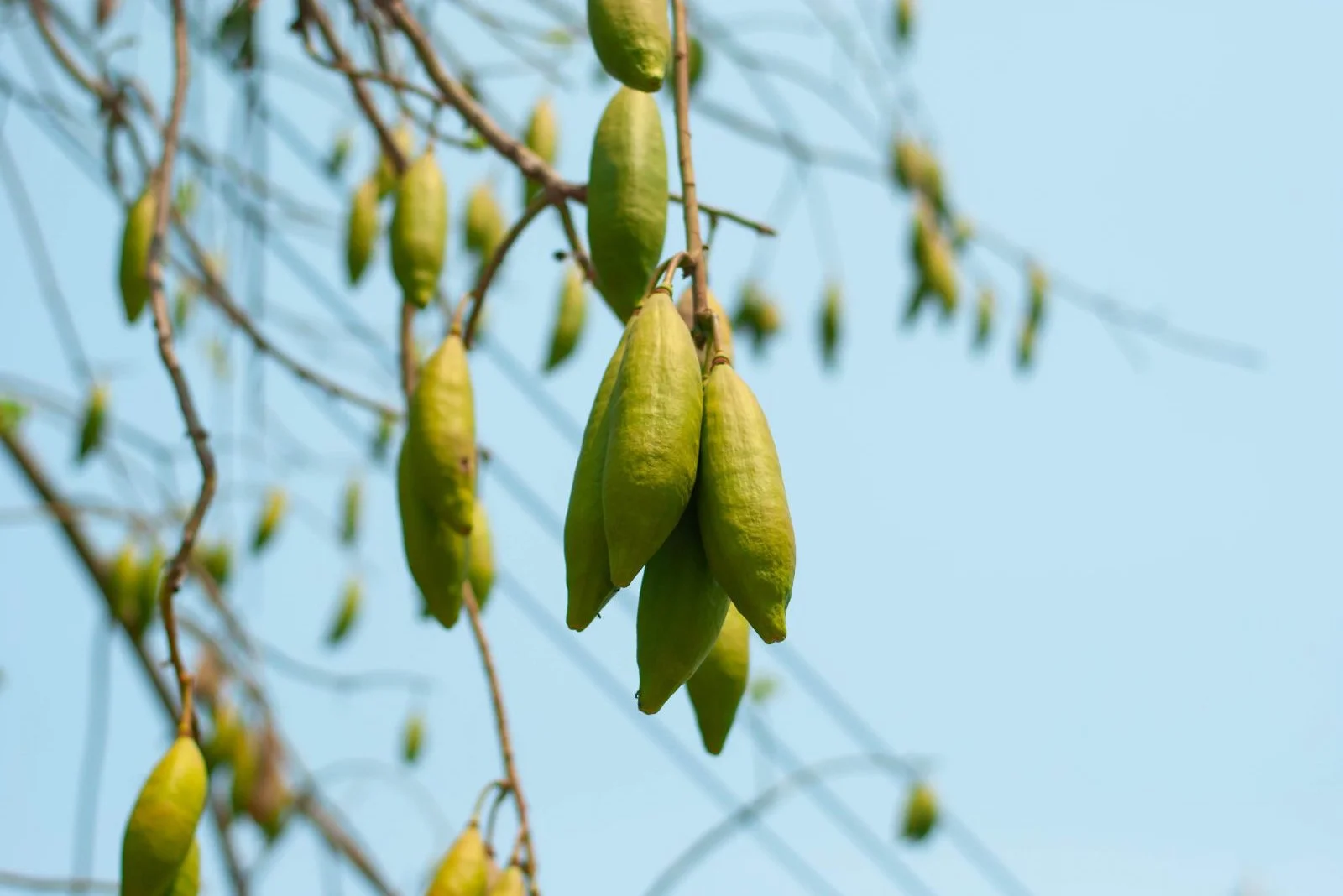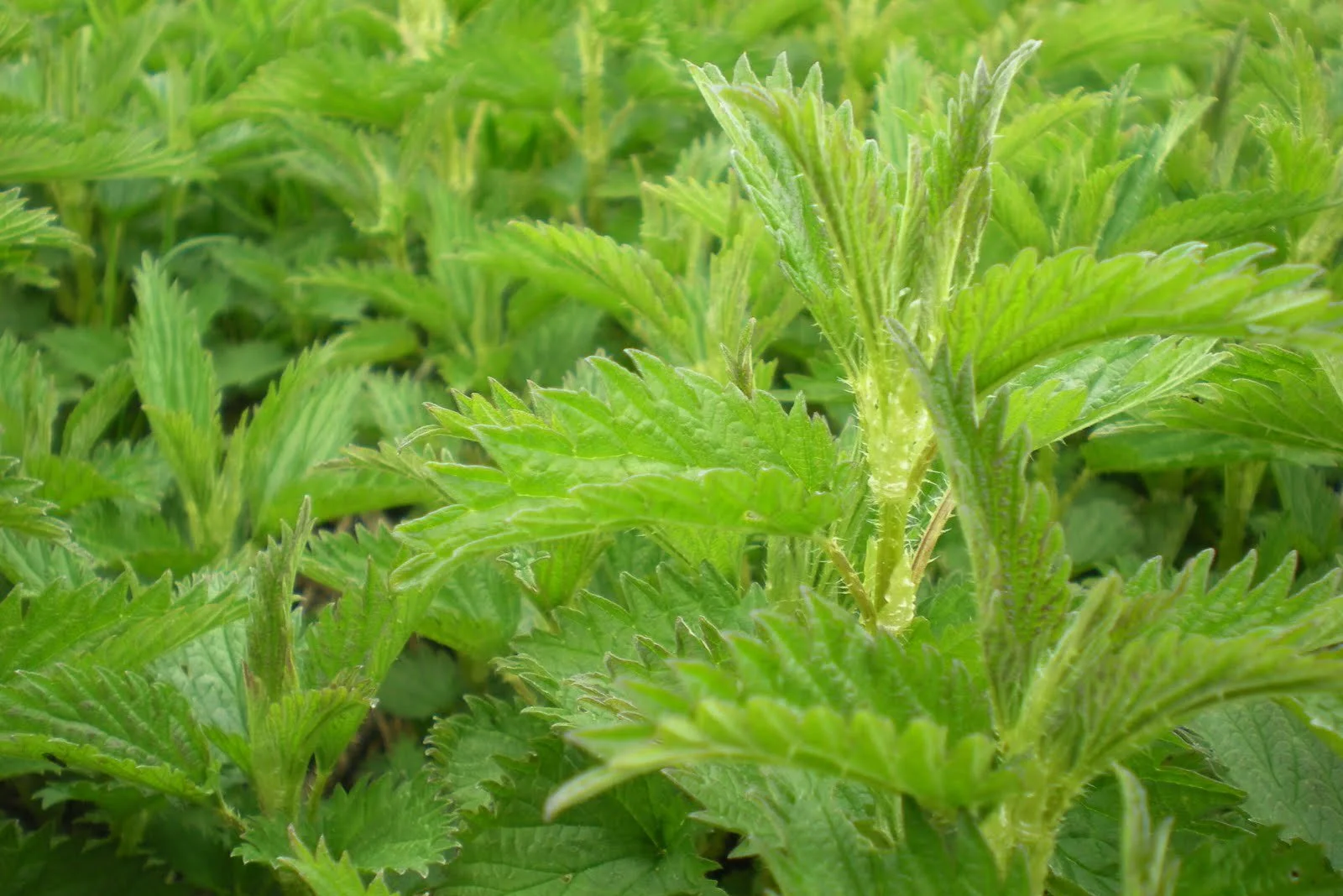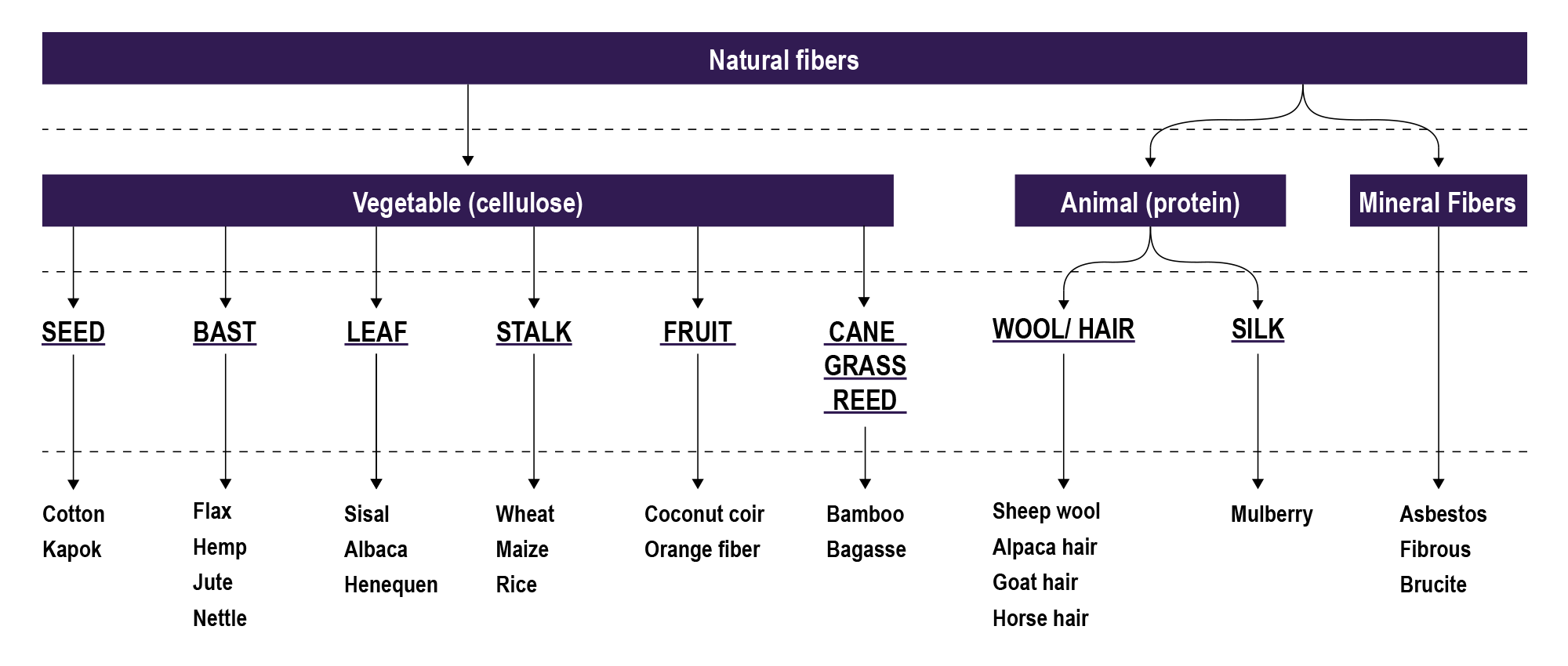Other Natural Plant-Based Fibres: Hemp, Nettle, Kapok
Recommendation
Win- Win Textiles recommends using alternative vegetable fibres rather than cotton whenever possible. Hemp, nettle and kapok count to the oldest and most versatile crops of mankind. Earliest findings of hemp products in Europe date back to the Hallstatt culture (800-400 B.C.), and the Discover Natural Fibre Initiative (DNFI) estimates that about 10 million households are involved in the production of these alternative vegetable fibres. Especially in times of increasing monocultures, these plants are an enrichment to agro-biodiversity, particularly when grown organic. These natural plant-based fibres usually grow without the need for synthetic pesticides or insecticides, they are rain-fed, and they do not compete with food crops and biodegrade at the end of their lives.
Hemp is mostly produced in Europe and Asia, kapok in Asia (mostly Indonesia & Thailand), Africa and America and nettle in Europe.
The Sustainable Development Goals
When using other natural plant based fibres, brands will contribute to achieving the SDGs:
Production
Similar to cotton and flax, the fibres of hemp, nettle and kapok plants are naturally grown and do not need heavy processing such as synthetic or regenerated fibres. Hemp and nettle belong to the bast fibres, same as flax. Kapok, on the other hand, belongs to vegetable fibres grown from a seed just like cotton with the distinction that the kapok fibres are hollow fibres grown on the kapok tree (Ceiba pentandra).
Source: www.aplustopper.com/types-of-natural-fibres-uses/
The kapok tree produces up to 4,000 fruits per season, measuring up 15 centimetres long.
Eventually, the pods open on the tree, exposing the raw kapok fibres.
The pods are then harvested by hand, knocked off with sticks or cut down. The tree is, however, not harmed.
After breaking the pods with the help of gavels, the seeds (over 200) and fibres (0.8 – 3.2 cm) are removed by hand.
Kapok is notoriously difficult to spin into yarns as it is very brittle, lack elasticity and is mostly used for insulation, filling and non-woven textile manufacturing. However, the latest technologies allow kapok blends with up to 80% kapok fibre content.
Hemp and nettle are produced using the long fibres found in the plant stalk similar to all bast fibres.
In Europe, the fibres are separated using natural or dew retting techniques. This involves leaving the plants in the field for four to six weeks after harvesting, until the fibres have naturally separated.
Alternatively, to speed up the process, ‘chemical water retting’ can be used, whereby the flax is submerged in a tank with acidic chemicals to separate the fibres.
Following this separation, a mechanical process called ‘scutching’ is applied, which removes the fibre from the seeds and straw.
Combing or hackling is then undertaken to clean the fibre before being spun to be ready for textile manufacturing (knitting or weaving).
Market situation
According to the Textile Exchange, the global production volume of other plant-based fibres is around 6.5 million mt and the market share in 2019 was approximately 5.8%. The bast fibre jute had the largest market share with around 50-60%, but is mostly used to make twines, ropes, matting and packaging materials. Thus, it plays only a minor role within textiles and fashion. The second largest market share of other vegetable fibres had coir, a fibre made from coconut husk, with approximately 20%. However, this is again mostly used in home textiles and not within the product offer of Win-Win Textiles. Hemp had an estimated global production volume of around 60,657 mt in 2019. The world’s total kapok production was estimated at 90,520 t in 2018. There is currently no publicly available data on the nettle fibre production capacities.
Hemp has been recognised as extraordinarily tensile and durable, but much legislation against the psychoactive qualities of Cannabis sativa have made it harder for farmers to grow this beneficial crop. However, the growing interest in sustainable and local fibre options increase the demand for natural alternatives to cotton, leading to a rise in demand for fibres such as hemp, nettle and kapok. Nevertheless, they remain niche fibres for now, and availability and supply chain integration can be challenging.
Tracing conventional hemp, nettle and kapok back to its origin depend largely on visibility within the supply chain, as there are no formal certification routes. However, the limited availability could in this case be an advantage. Organic fibres, on the other hand, are easily traceable, and product claims can be made where it is independently certified by Organic Content Standard (OCS) or Global Organic Textile Standard (GOTS), yet availability and integration may prove even more difficult for organically certified nettle, hemp and kapok. Win-Win Textiles can help you with organic certification and resource intensive chain of custody requirements. A detailed paperwork trail through each stage of the supply chain is required, and manufacturing procedures will need to be certified. This is, however, at this time relatively costly. Contact us for more information.
Sustainability considerations
The biggest advantage of cotton alternatives lies in the cultivation. Fibres from hemp, nettle and kapok grow with little or no use of pesticides or insecticides. Furthermore, the fibres are rain-fed and do not rely on irrigation. An advantage of the kapok tree specifically is that the it does not need to be cut when harvesting the fibres, which means that the tree can further absorb carbon dioxide, and that it is not cultivated in monocultures and can be re-harvested time and time again.
None of the plants are competing with food crops, but grow from renewable resources and are biodegradable. Hemp, nettle and kapok harvest and production is labour intensive and – like other natural fibres – is often produced by small holder farmers with the risk of poor labour standards and working conditions in regions such as Eastern Europe and China. When choosing organically certified hemp, strict guidelines adhere to ILO (International Labour Standards) conventions regarding labour standards and the promotion of decent working conditions. This includes prohibiting forced and child labour and the discrimination of workers, freedom of association and collective bargaining as well as encouraging improved health and safety conditions. As the use of synthetic fertilisers and pesticides are avoided, health and safety standards are also improved.
New developments/outlook
When considering bast fibres’ sustainability credentials, it is an attractive alternative to other less sustainable natural fibres such as conventional cotton. Additionally, technologies are being developed to make bast fibres a more direct alternative for cotton. For example, CRAiLAR from Bast Fibre Technologies Inc is an enzymatic treatment for bast fibres to make it feel softer with functional properties like manmade cellulosic fibres. Compared to conventional bast fibres, CRAiLAR is considered to be a price premium fibre. Another new development is BioFibre™ by Circular Systems’ Agraloop Biorefinery. BioFibre™ are fibres made entirely from food crop residues.






